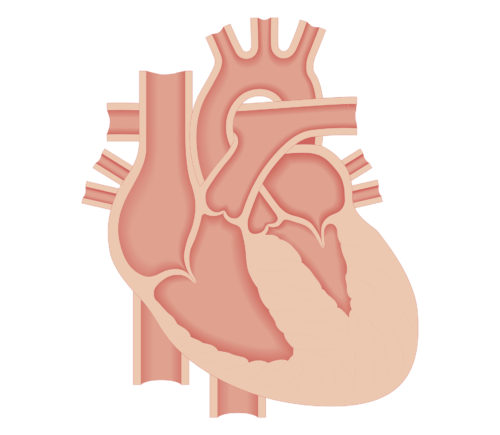
At a Glance:
- HCM is more common than previously thought
- Sudden cardiac death occurs in some, but not all patients with HCM
- Identifying which HCM patients are at risk for sudden cardiac death is the focus of a study led by UVA researchers
Hypertrophic cardiomyopathy (HCM) is often viewed as a disease of athletes, and the tragedy of losing a young athlete in peak physical condition to HCM-related sudden cardiac death attracts widespread attention. However, this assumption that HCM only occurs in athletes couldn’t be further from the truth. As experts from the Hypertrophic Cardiomyopathy Association (HCMA), a patient advocacy group, put it: “There is no gender, age or ethnic factor specific to HCM. It is an equal-opportunity disease.”
In fact, HCM is much more common than these isolated incidents might indicate. For many years, researchers using ultrasound data estimated that HCM affected one in 500 people, making it the most widespread genetic heart condition. Newer genetic and imaging techniques, however, suggest that HCM may be twice as common, which translates into a million or more cases in the U.S. alone.
Another common misconception is perhaps the most important to note: although HCM can be fatal, most HCM patients can be treated successfully and live normal lives. The challenge is determining who among the HCM population is at risk of sudden cardiac death.
As one of 30 HCMA Centers of Excellence—the only such center in Maryland, Virginia, West Virginia, and the District of Columbia—UVA Health System has the range of resources needed to make this distinction as accurately as possible and provide the most appropriate care for each patient. UVA is also leading an international effort that could increase the accuracy of HCM diagnoses many times over.
The Gold Standard for HCM Care
In HCM, mutations to genes encoding heart muscle proteins lead to excessive thickening of the heart muscle. In addition, the basic units of this tissue are misaligned and are interspersed with scar tissue. The excess muscle can prevent the heart from pumping efficiently and can also lead to arrhythmia.
“The severity of symptoms can vary considerably from person to person,” says Christopher Kramer, MD, who directs the center along with Robert Battle, MD. “Some patients are asymptomatic and live into their 90s, while others are at risk of sudden death early in life. “
When it became an HCMA Center of Excellence, UVA demonstrated that it could offer the comprehensive approach needed to manage patients with this range of symptoms. The HCM team at UVA includes electrophysiologists, pediatric cardiologists, interventional cardiologists, radiologists, genetic counselors, psychologists, nutritionists and cardiac surgeons for those patients with outflow obstructions that do not respond to medication.
As part of its HCM diagnosis and monitoring, UVA uses cardiac MRI, which is more sensitive to subtle forms of the disease than echocardiography, which uses ultrasound. Kramer adds that cardiac MRI is also the only way of imaging scar tissue in the heart, which has been shown to have prognostic importance.
UVA also offers genetic testing to confirm or rule out a diagnosis. Regardless of results of genetic testing, UVA reaches out to family members and encourages them to be screened for the disease with echocardiography. Because HCM is an autosomal dominant condition, 50 percent of the children of HCM patients may have the condition. Family screening is particularly vital in cases in which HCM is asymptomatic. “When you treat a patient with HCM, you inherit an entire family of patients,” Kramer says.
In addition to its diagnostic capabilities, UVA is able to offer patients investigational therapies. “Because we are an HCMA Center of Excellence, we are often asked to participate in clinical trials,” Kramer says. A case in point is a new drug developed by MyoKardia that reduces left ventricular contractility. “One reason that the treatment options for HCM are limited is that most heart therapies are designed to improve the contractility of weakened heart muscle,” Kramer explains. “By reducing contraction in patients with HCM, you can reduce outflow obstruction in the left ventricle.”
Staying One Step Ahead of Sudden Cardiac Death
A critical obstacle to treating the disease is finding a better way to identify HCM patients who are likely to develop sudden cardiac death. In 2013, the National Institutes of Health funded a $14.4 million campaign to create an HCM registry as part of an international observational study. The registry now includes 2,764 patients from 44 sites in the U.S. and abroad.
Kramer, the co-principal investigator of the study, and his colleagues are examining a variety of data including cardiac MRI, screens for circulating biomarkers and genetic testing to determine if they can more precisely identify the risk factors for sudden cardiac death. The group plans to announce its conclusions within the next two to three years. Ultimately, Kramer would like to create a simple smartphone app that clinicians can use to enter data and then produce a five-year risk analysis of sudden cardiac death in an individual patient.
“If you have a more accurate way of predicting the course of HCM, you can be proactive in your choice of therapies,” Kramer says. “Being able to differentiate among specific HCM patients will also be useful in testing new approaches for the disease.”
Learn more about the resources available to patients with HCM at UVA.